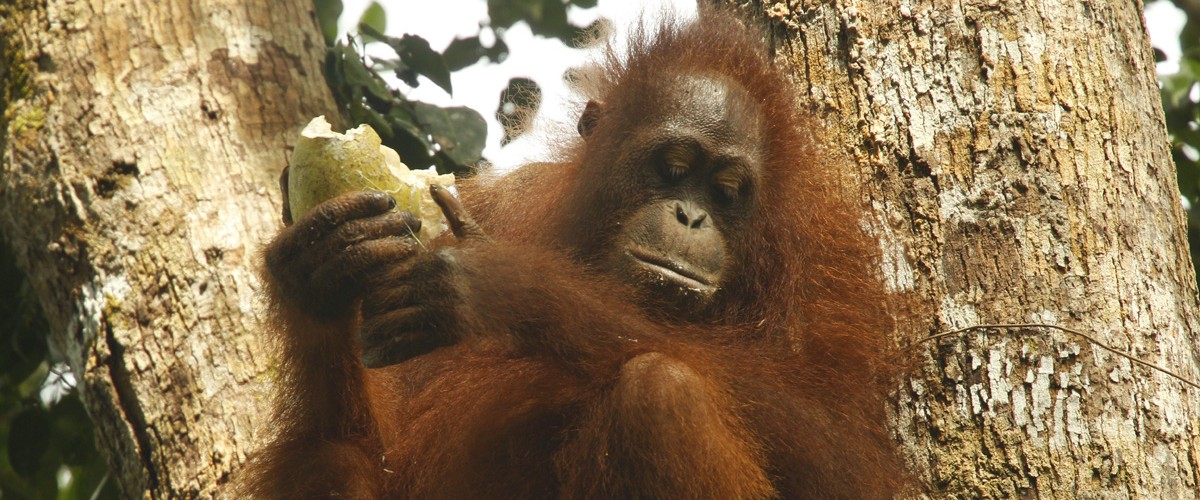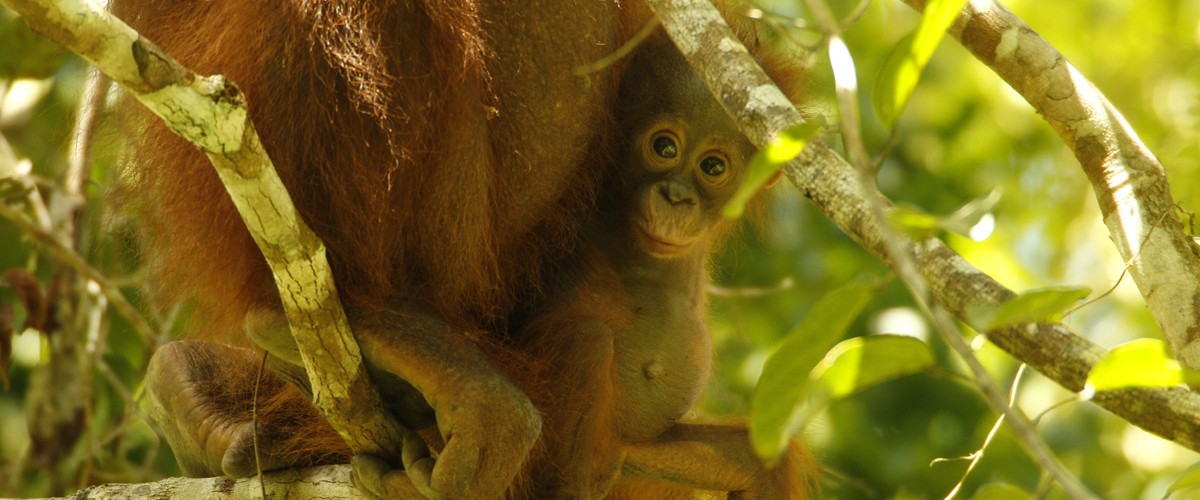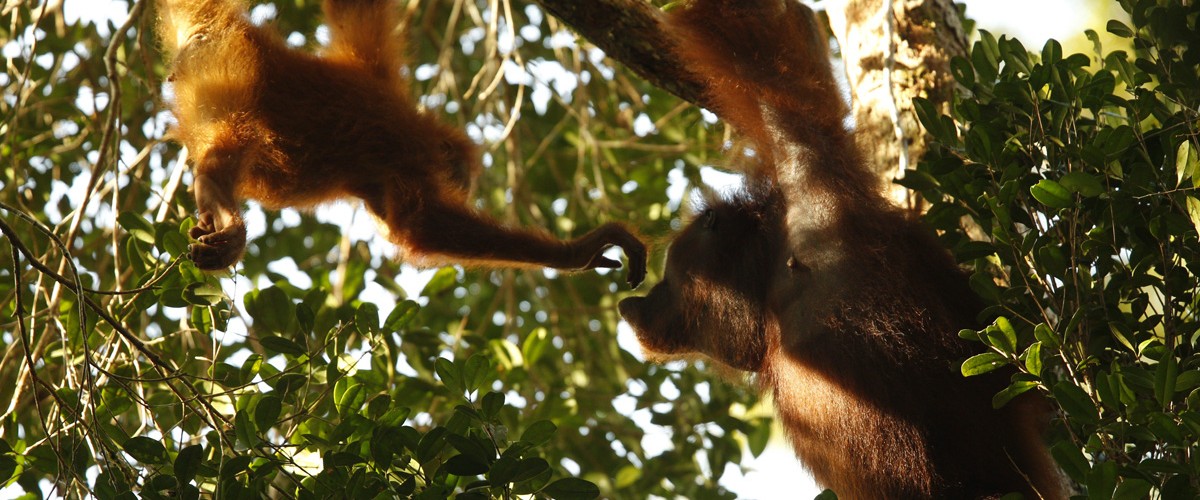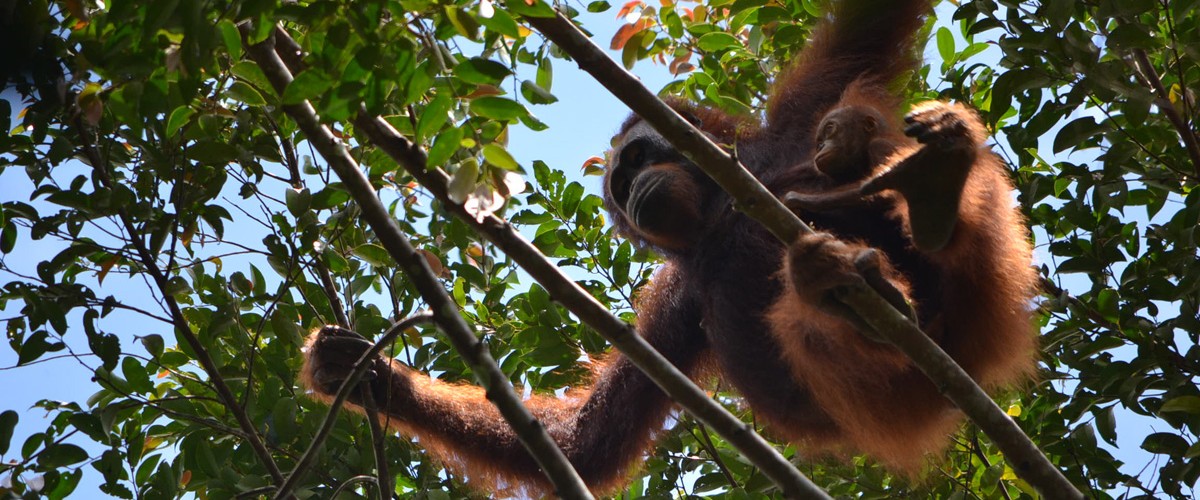By Katherine Lauck, Research Assistant
The research that I am helping with at Cabang Panti, for Ph.D. student Andrea DiGiorgio’s dissertation, seeks to better understand the diet of the Bornean orangutan. Andrea is a student of Dr. Cheryl Knott’s in the Anthropology Department at Boston University. Nutritional analysis has been a part of Dr. Knott’s orangutan research from the very beginning, but Andrea wants to take it one step further. Specifically, Andrea is asking how the nutrient content of foods affects the feeding choices of orangutans. For example, why do they eat leaves, which are thought to be low-energy foods, when higher-energy fruits are available? Why do they consume the fibrous, tough, and often bitter inner layer of bark (called the cambium)? Before her project, the majority of nutrition research focused on fruits for two reasons. The scientific reason is that orangutans are currently classed as frugivores. The second, and more practical reason, is that other foods, including leaves and epiphytes, often grow exclusively high in the canopy, which is inaccessible without technical tree climbing experience, expensive gear, and a lot of hard work. Thus, in the past, it was often difficult to get an adequate sample of these hard to reach items, and the nutritional analysis of leaves and epiphytes was unfinished compared to fruits. But without analyzing the nutritional qualities of these foods, our understanding of the diet choices of orangutans would be incomplete. During Andrea’s search to acquire the training necessary to safely climb the towering rainforest trees in Gunung Palung National Park, she met me, a recent Cornell graduate who (at the time) spent her springs and falls as an instructor at the Cornell Tree Climbing Institute.
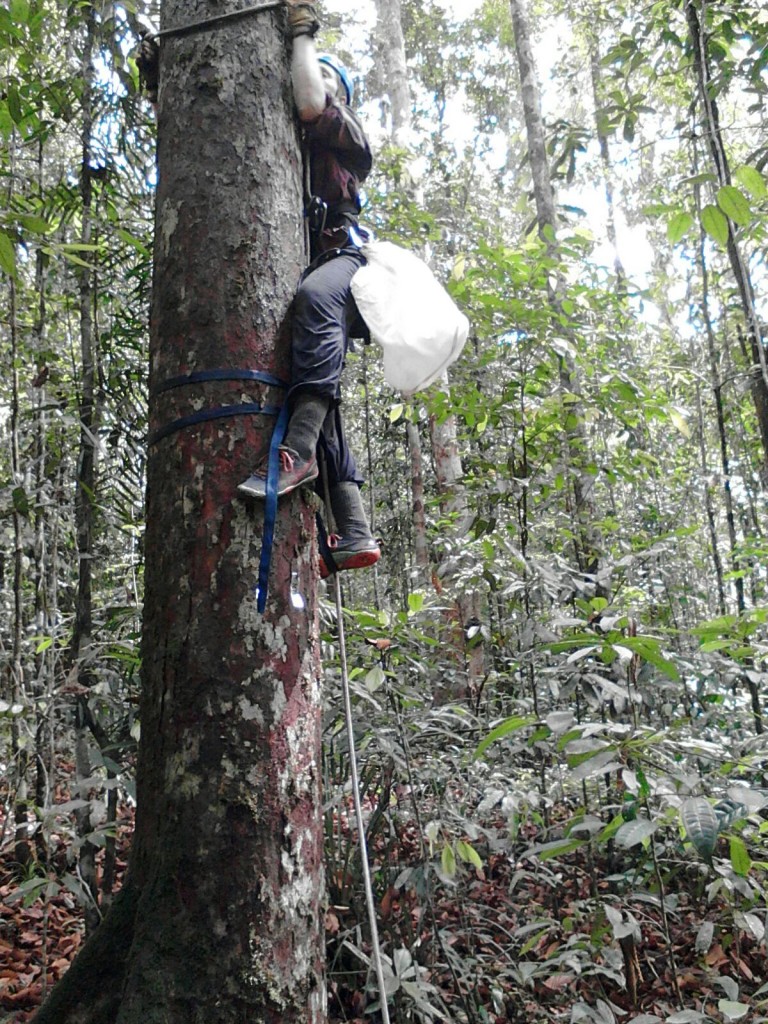
Katie beginning a climb into the canopy to collect food samples for nutritional analysis.
I climb trees using ropes as my life-support system so that I can easily reach the upper canopy without fearing a fall. I have employed three main systems while assisting on Andrea’s project. For the first, called the Single Rope Technique, I slingshot a small rope over a hefty, healthy branch and use it to pull up a larger rope that I secure and then climb. In the second technique, the Double Rope Technique, I pull a short rope around a close branch, secure both ends to my harness, and use a metal device called an ascender to shorten the rope. The third technique is called girthing, and for this I use a rope connected to my harness and a foot hold. Both are tied around the trunk of the tree, allowing me to ascend the trunk directly. At times I may need to use all three techniques in one tree, depending on the location of the sample.
The largest tree I’ve climbed thus far in Indonesia was enormous, at about 200 feet, it easily towered over its neighbors. A thick coating of epiphytes concealed its branches and lianas obscured its trunk. Earlier, a female orangutan had rustled through this thicket searching for a specific plant that we had been unable to identify. Luckily, she had dropped a few leaves to our team below who, despite their binoculars, had to strain to see her. So when I found the tree a few weeks later to climb it, I felt humbled by her bravery and innate skill.
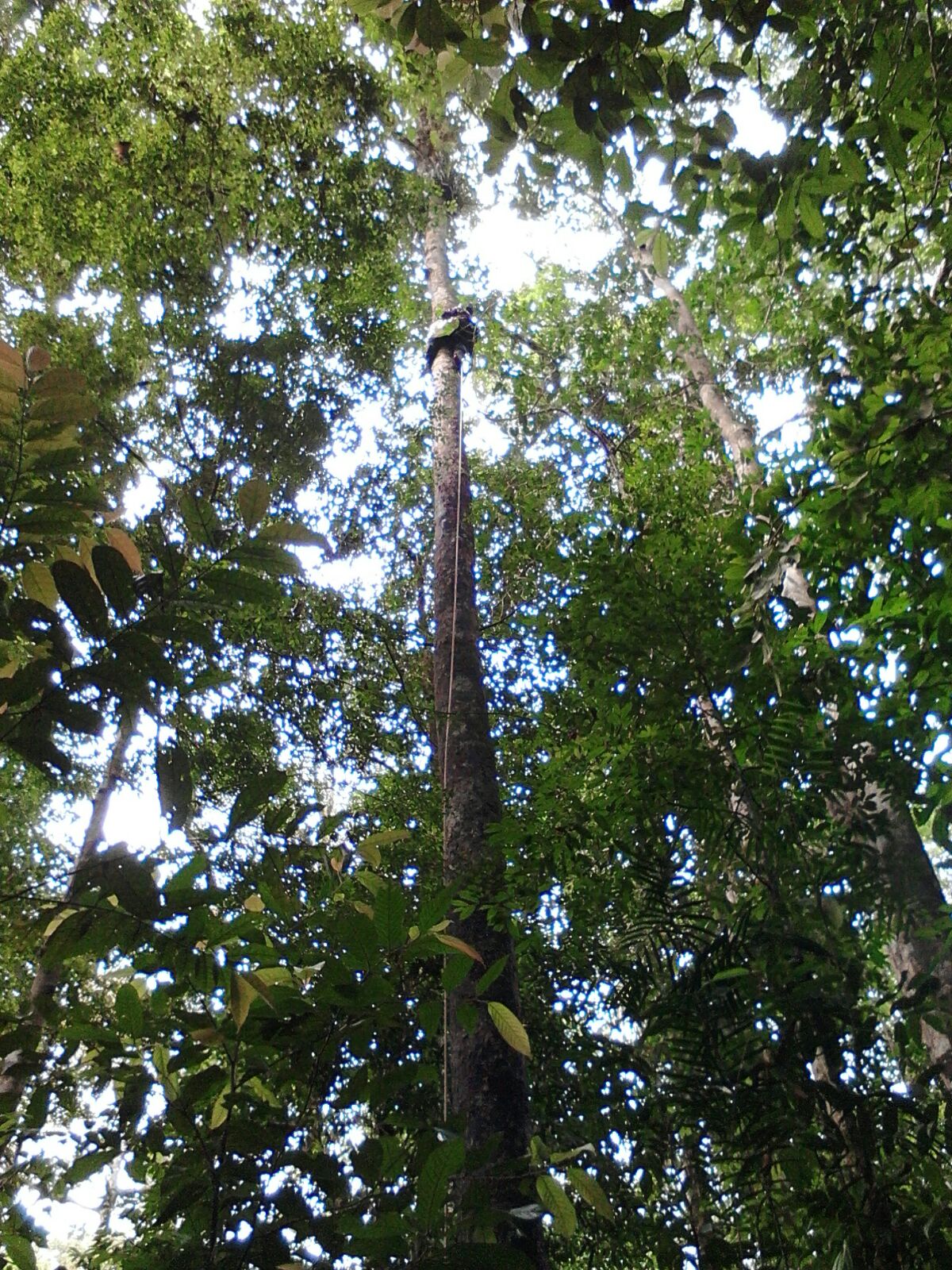
Katie hard at work in search of valuable data for Ph.D. student Andrea DiGiorgio’s dissertation.
I reached the top after an hour of climbing carefully to avoid any bees or ants that could bring my adventure to a painful and early end. I beached myself on the first big branch and surveyed the view. Above me, the tree rose another 50 or more feet. Below me, the trunk plunged into the secondary canopy, which left no window to the ground. Around me I saw a sea of leaves ruffling in the light breeze. Swifts consuming their daily bread of insects zipped along the surface. My target, a succulent, grass-shaped epiphyte, sprouted no more than 10 feet above my head – but would it be enough for a full 36-gram sample? I didn’t think so. I scooted up a liana and depleted the patch; I would definitely need more. After a few minutes of scrutinizing the main trunk and its branches, I spied a massive spray of the epiphyte…located about 30 feet from the main trunk at the tip of a huge branch.
-
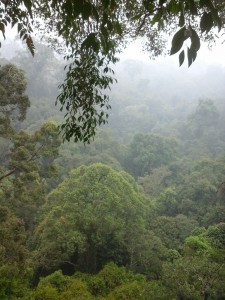
-
The view from the treetops – a vantange point that few humans get to experience.
-
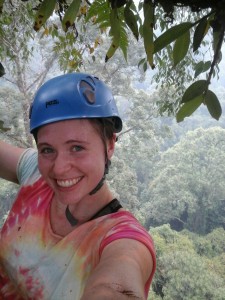
-
Katie enjoys the view at the top.
An hour of hard work later I reached the branch and stuffed my sample bags full. Satisfied and exhausted, I collected my gear and descended, where Andrea awaited the verdict. Did I collect enough? Would we be able to analyze this sample? Yes. We would. Over the last 10 months, I’ve been lucky enough to collect many of these never-before-analyzed plants, and I hope that Andrea’s dissertation as well as the entire orangutan research project will benefit from my tree climbing efforts.
Katie graduated from Cornell University with an evolutionary biology degree earlier this year, and previously worked at the Cornell Tree Climbing Institute.
